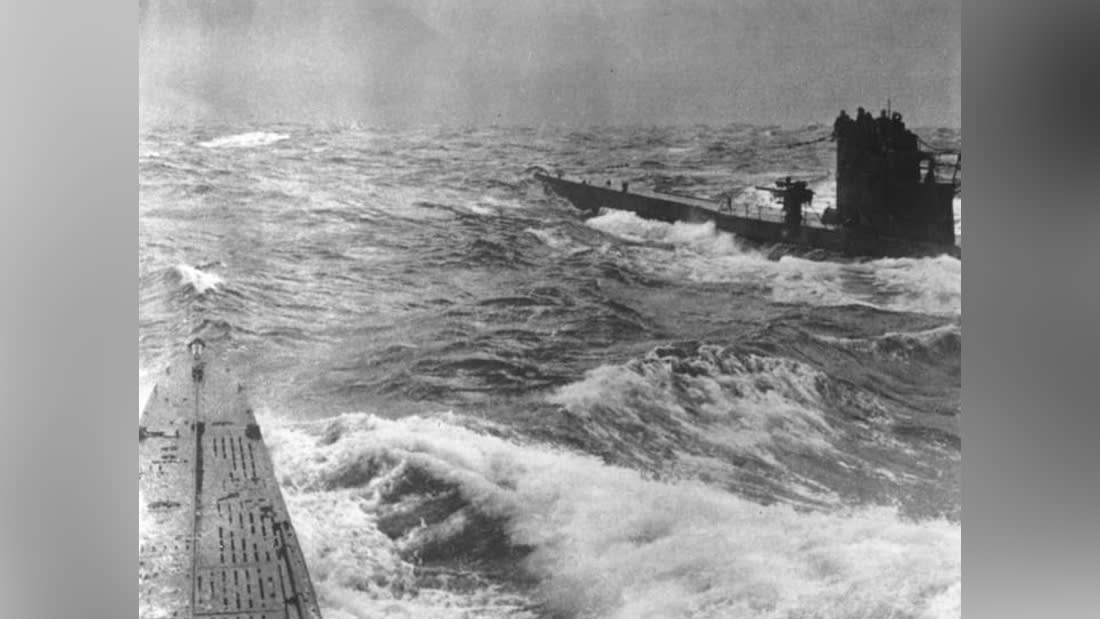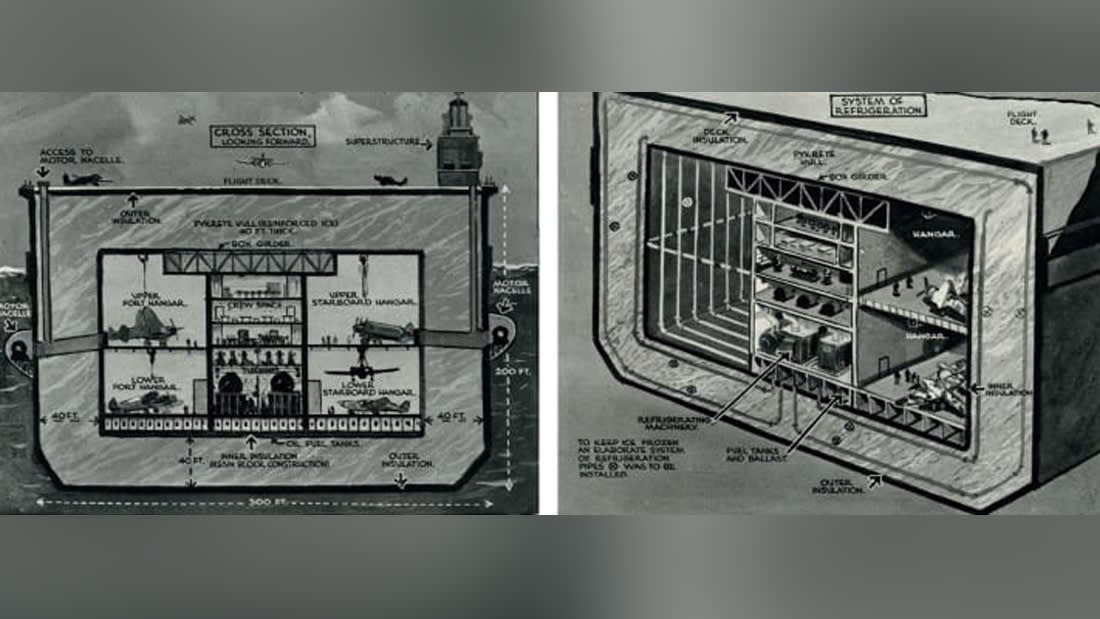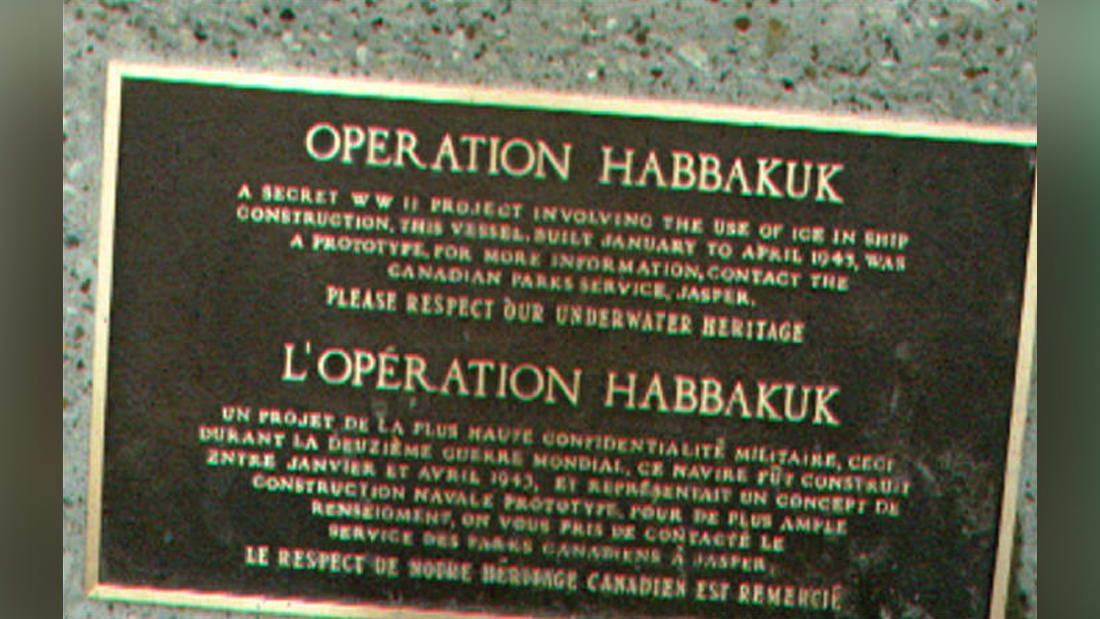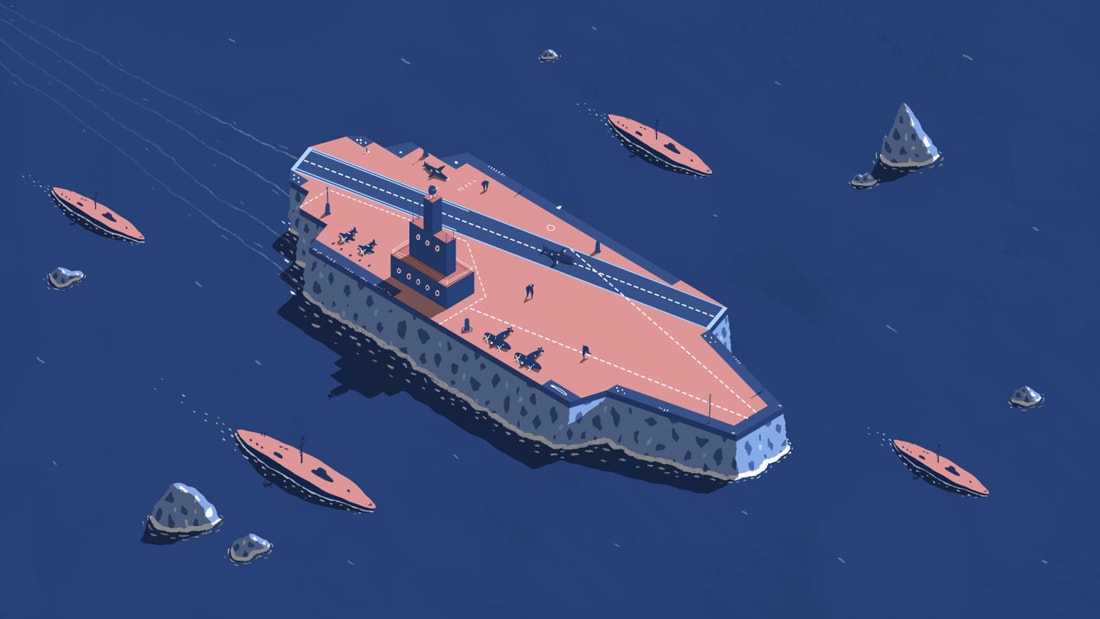دبي، الإمارات العربية المتحدة (CNN) -- ما زالت الأعماق الداكنة في بحيرة باتريشيا تخفي سراً، الهدف منه كان تغيير مسار الحرب العالمية الثانية.
وتوصل البريطانيون إلى فكرة غريبة للتفوق على قوارب "U-boats" الألمانية القاتلة، وذلك من خلال صنع ناقلات طائرات من الجبال الجليدية العملاقة، تطفو فوق سطح الماء، ولا تكلّف الكثير من المال. ورغم أن المشروع تميّز بجنونه، إلا أنه حصل على موافقة رئيس الوزراء البريطاني الأسبق ونستون تشرشل في ذلك الوقت.

وبُني نموذج أولي واُختُبر في البحيرة على مدى أربعة أشهر، وأجزاء منه ما زالت في المكان نفسه، على عمق 50 قدماً تحت سطح المياه.
ورغم أن الجليد قد ذاب من وقت طويل، إلا أن آثار مشروع هاباكوك، ما زالت تتواجد في المكان.
وبدأت الفكرة في العام 1942، في فرع لمكتب الحرب البريطاني، عندما حاول عالم غريب الأطوار يدعى جيوفري بايك معرفة كيفية حماية سفن الحلفاء في منطقة "U-boat alley" في المحيط الأطلسي حيث كانت تتواجد الغواصات النازية. ومع عدم توفر مواد بناء مثل الفولاذ، توصل بايك إلى فكرة سحب قطعة من الجليد من القطب الشمالي، جنوباً لوضع الطائرات عليها.

وفي ذلك الوقت، اُعتبر الجليد غير قابل للتدمير تقريباً، إذ ذكرت دوريات الجليد الدولية حينها، والتي أُنشئت لتدمير الجبال الجليدية بعد أن أغرق أحدها سفينة تيتانيك في العام 1912، أن تفجيرها لم يكن سهلاً، حتى مع الطوربيدات والقنابل الحارقة.
وقالت الأستاذة في كلية سانت ماري في ولاية ماريلاند سوزان لانجلي، والتي أجرت أبحاث الدكتوراه حول الموضوع: "اعتقد بايك أن الجليد هو المادة الاستراتيجية الجديدة التي ستفوز بالحرب"، مضيفة: "وتشرشل كان على استعداد لقبول الفكرة."

ولكن، بناء ناقلة حربية من الجليد كان أمراً صعباً، إذ قالت لانغلي: "إحدى المشاكل تمثلت بضرورة وجود 50 قدماً من الحاملة فوق الماء، لإطلاق طائرة منها.. ولكن، بما أن حاملات الطائرات الجليدية تُوجد نسبة 90 في المائة منها تحت سطح الماء، فهذا يعني وجود ما يقرب من 500 قدم تحت الماء". كما سيكون من المستحيل تقريبا نقل هذه الحاملة، إذ عندما يذوب طرف جبل الجليد ، يُصبح دورانه على سطح المياه أسهل، ما يسبب مشكلة للطائرات التي تحاول التزود بالوقود.
ودفع ذلك الأمر، العلماء إلى ضرورة بناء هيكل سفينة تقليدية من الجليد مع ضرورة الحفاظ على درجة التجمد من خلال نوع من نظام التبريد.
والسفينة الحربية المقترحة وهي الأكبر على الإطلاق، إذ بلغ طولها ألفين قدم، وعرضها 200 قدم، أي أكثر من ضعف حجم تيتانيك، فيما تخطى وزنها المليونين طن، بقدرة استيعاب 300 طائرة على متنها. وكان من المقرر أن تُبحر السفينة بسرعة 7 عقدة (8 أميال في الساعة) وتحمل الأمواج على علو 50 قدماً، ما يعطي تشرشل سلاحه السري ضد "U-boats."

وتمت الموافقة على المشروع بتاريخ 4 ديسمبر/تشرين الثاني في العام 1942 مع مذكرة صُنّفت على أنها "الأكثر سرية" وطلبت إنشاء نموذج أولي.
وفي أوائل عام 1943، بُنيت سفينة نموذجية بطول 60 قدماً بجدران وأرضيات من الخشب، والقطران، وأنابيب التبريد، وجزء كبير من الجليد من البحيرة. وقالت لانغلي: "كانت أشبه بعلبة حذاء كبيرة، مع مكعب ثلج عملاق في الوسط، وأنابيب التبريد تدور حولها مثل القفص الصدري. وفي وسط قطعة الجليد وجد مستطيل صغير، حيث كانت وحدة التريد."

وأظهر الاختبار أن سفينة الجليد لم تكن خيالاً خالصاً. ولكن بحلول منتصف العام 1943، بدأ المشروع بالغرق، وأوقف العمل به.
